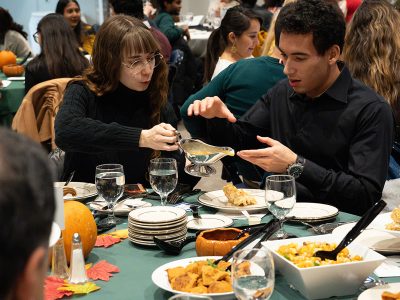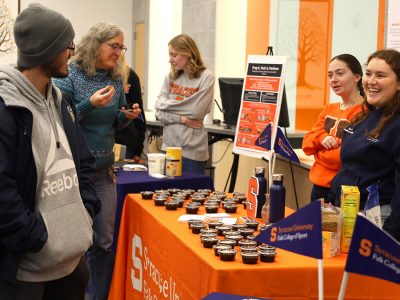Uniting the Community in the Pursuit of Environmental Justice
How can everyday people make sense of climate change’s effect on the planet and human life? Through creative outlets like storytelling, interpretation and art, the humanities can demonstrate how environmental concerns are intertwined with social, economic and cultural issues. Addressing the climate crisis through a humanistic lens is a guiding principle behind the Environmental Storytelling Series of CNY, says co-founder Brice Nordquist, Dean’s Professor of Community Engagement and associate professor of writing and rhetoric in the College of Arts and Sciences (A&S).
“Oftentimes when people think of environmental justice they think of carbon emissions, ocean acidification, melting icecaps, deforestation and other incredibly important causes and consequences of climate change,” explains Nordquist. “What they don’t often consider are the ways that environmental justice is intertwined with social justice and racial justice.”
Coordinated by A&S’ Engaged Humanities Network (EHN) and SUNY ESF’s writing, rhetoric and communications program, the Environmental Storytelling Series of Central New York (ESSCNY) is an initiative of community-based arts and humanities programs geared toward the pursuit of environmental justice. This year’s series, “Environmental Storytelling and the Collective Work of Repair” is part of the Syracuse University Humanities Center’s 2022-23 Syracuse Symposium on Repair. Programming throughout the year has featured photography, poetry, readings, talks and film screenings by different environmental storytellers.
As the climate crisis worsens, research has shown that low-socioeconomic communities are often disproportionately affected. Factors such as education, political power and access to resources play key roles in climate vulnerability. As climate change becomes more widespread, existing inequalities can become exacerbated, which is why collective organizing–coming together to share information and act– is critical at this particular time.
Connecting With Local Youth through Artistic Expression
Engaging youth across the city and region is an important facet of ESSCNY. Last December, the series welcomed poet Vievee Francis, whose award-winning “ecopoetry” challenges readers to reckon with the colonial legacies which have shaped people’s relationships with the environment. Francis was also a featured presenter during the Department of English’s Raymond Carver Reading Series
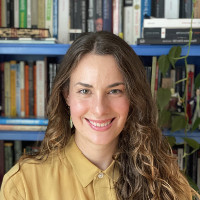
Lauren Cooper, a Ph.D. candidate in the Department of English, helped organize Francis’s visit and curated a learning guide on ecopoetry and environmental hauntings. Her work on that project was supported by a Humanities New York grant from the Humanities Center and the Central New York Humanities Corridor.
As a scholar who specializes in the climate history of the Romantic period and its relationship to Romantic literature, she says artistic forms such as poetry offer new ways of thinking about, interacting with and living with the environment.
“The way we’re taught to think about the environment matters for climate action and it comes from inherited legacies of humanist thought. The poems we read in school, the landscape postcards we buy, the places we think are valuable and worth saving for aesthetic reasons and the human/nature binary all have their roots in older European humanist traditions,” says Cooper. “If we want to change how we think, we need to first come to terms with those legacies and look to the writers, like Vievee Francis, who are trying to teach us new ways of orienting ourselves.”
To put this in perspective, Cooper points to Banff and Yellowstone–the first national parks in Canada and the United States–which reflect Romantic ideas about pristine uninhabited wilderness and its value for humanity. Each feature massive snowcapped mountains, beautiful lakes, towering forests and thundering waterfalls. But what Cooper explains is often forgotten are the stories of those who lived there before those lands were turned into national parks.
“They were home to Indigenous populations who were forcibly kicked off their land in order to create this version of ‘wilderness,’” says Cooper. “Environmental storytellers and poets like Francis allow people to recognize the myths they’ve been told about the environment—many of which elide violent legacies of colonialism and racism—in order to transform their ecological relationships.”
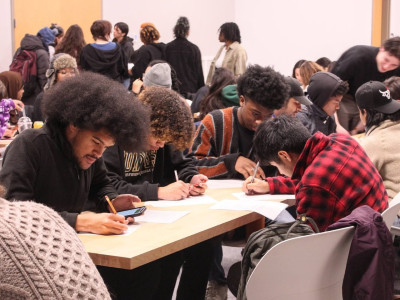
During Francis’s visit, ESSCNY hosted a writing workshop with Write Out, a community-based creative writing collective for middle and high school students in Syracuse. Francis shared her poetry, which draws on histories of slavery, Blackness, intergenerational trauma, family history, personal history, literary history and environmental history, and the students wrote responses inspired by Francis’s work.
“In Write Out we try to impress upon the students that poetry is a living thing; people are still writing it, it still matters and their voices are unbelievably important,” Cooper says. “Seeing Francis read in-person to a crowded room of intent listeners brought that point home more effectively than we could ever have done otherwise.”
Cooper, who plans to become a professor of English after she defends her dissertation, says one of the most rewarding aspects of being a part of the ESSCNY team is getting to think and talk about the environment in a manner that is distinct from her own research.
“Academia so often cordons us off into our own specialties, to think and learn individually or with a community of people who are trained to think and learn just like you,” notes Cooper. “This series is a chance to do interdisciplinary work that is vital, timely and engaged in a meaningful way with the community around us.”
Collective Action
Central to the mission of ESSCNY is developing an ongoing exchange among people in the city of Syracuse, the broader Central New York area and Syracuse University, says Nordquist. One example of this was a program in the spring which brought attention to reproductive justice within the city of Syracuse.
SeQuoia Kemp, founder of Doula 4 a Queen and founding member of Sankofa Reproductive Health and Healing Center, an organization providing perinatal care to Black, African and Indigenous communities in Syracuse and CNY, led an event titled “Environmental Justice is Racial Justice is Reproductive Justice.” The program traced out the relationship between environmental racism and reproductive justice, highlighting how the health of mothers is a key barometer of community health.
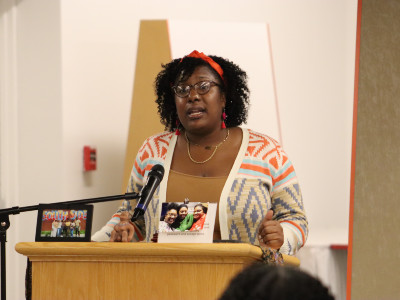
Kemp’s event brought attention to Maternal Toxic Zones–areas deemed unsafe spaces for maternal health. Her work raises awareness on how factors such as air pollution, food insecurity and housing insecurity are tied to the conversation of environmental justice. Events like Kemp’s allow community collaborators to educate members of the University on the environmental challenges that are most pressing to individuals living in the city of Syracuse, from home environment to neighborhood environment to natural environment.
“Our intention is to bring about ongoing discussion across ages and across community spaces,” says Nordquist. “Instead of a standard speaker series, we’re pursuing an ongoing exchange among people across the city and the region around these important issues.”
A Helpful Guide to Learning
To engage communities in continuing dialogue, each event is accompanied by a learning guide, developed by faculty, staff undergraduate and graduate students at Syracuse University, SUNY ESF, and local secondary schools. The idea is based off of Kettering Foundation Issue Guides, which frame public concerns in a manner that positions options for action in a clear and meaningful way. Similar to the Kettering guides, ESSCNY learning guides provide a brief overview of an environmental issue, an introduction to the storyteller, helpful terms to know, discussion questions, writing prompts and calls to action. They are then shared around the community at schools, libraries, community centers and online.
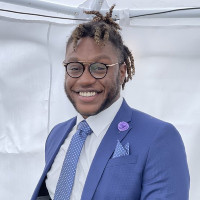
Winston Scott, a Ph.D. student in sociology in the Maxwell School, was awarded an Engaged Humanities Fellowship over the winter to lead the coordination effort of a reproductive justice learning guide. Scott, who is also an operations coordinator for Sankofa Reproductive Health and Healing Center, collaborated with Kemp to produce components for that guide, including calls to action for individuals who are lacking adequate access to perinatal care.
“Seeing individuals within the group learn about reproductive justice as we crafted the issue guide was amazing because this was new information for some, and for others this added to their existing knowledge of reproductive justice,” says Scott. “This needs to be an ongoing conversation, whether it is in a small group setting or amongst a large audience. Reproductive health is across all lifespans and impacts our lives in many ways that we can’t even fathom. But it is our duty to help protect and support the rights of birthing people, specifically those marginalized individuals.”
Sarah Nahar, an EHN graduate research assistant and Ph.D. student in religion in A&S and environmental studies in ESF, co-authored both the reproductive justice and Indigenous land rights and responsibilities learning guides. The latter accompanied ESSCNY events with documentarian Jason Corwin (Seneca Deer Clan), an assistant professor of Indigenous studies at the University at Buffalo. Corwin screened one of his films and led a workshop exploring how stories can move people to action, with a focus on filmmaking in pursuit of environmental justice.
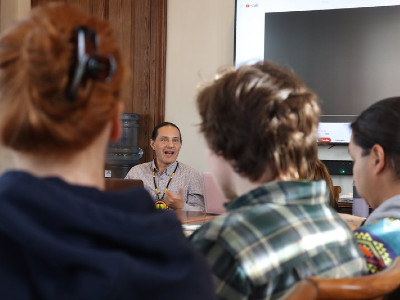
Nahar says working with the series has allowed her to tap into her identity as both a scholar and an activist, aligning with her long-term goals of being an advocate for climate justice.
“Since I am in the religion department in A&S and the environmental studies department at ESF, it was a good fit to work on something related to the stories we tell ourselves and each other about what life feels like at this moment of the climate crisis, and how we replenish ourselves, our communities and find the stories that give us hope,” says Nahar. “As humans, it is important to learn from and cherish each other and other species with whom we share this planet.”
Looking Forward
The series will wrap up with two more anchor events this spring featuring civil rights and environmental justice activist George Lakey on April 13 and 14. Lakey, who co-founded the Earth Quaker Action Team, will discuss that organization’s pursuit of ecojustice as it relates to race, class, queerness and the climate crisis. He will also speak with university and community members about crafting nonviolent social change campaigns to be inclusive, powerful and successful.
Looking to the future, EHN was recently awarded a $40,000 grant from the New York State Council on the Arts, which will support ESSCNY for several years to come, says Nordquist. Next academic year, activities will focus on the intersections of housing and environmental justice. Events and learning guides will explore the relationship of racial segregation, discriminatory land use practices and environmental exposures such as lead, superfund sites, asthma risks and substandard living conditions.
Through increased support and participation, Nordquist expects ESSCNY to grow in both scope and impact in the coming years. Through its diverse mix of events, programs, workshops and courses, which connect local community members and members of the university with the region’s and world’s leading environmental storytellers, ESSCNY will remain an important space for individuals to tell their stories and advocate for environmental equity.
“This effort is inspired by a sense of urgency around climate crisis,” says Nordquist. “The series offers an opportunity to mobilize more people across the region so we can invest together in better understanding and acting in response to ecological issues.”
